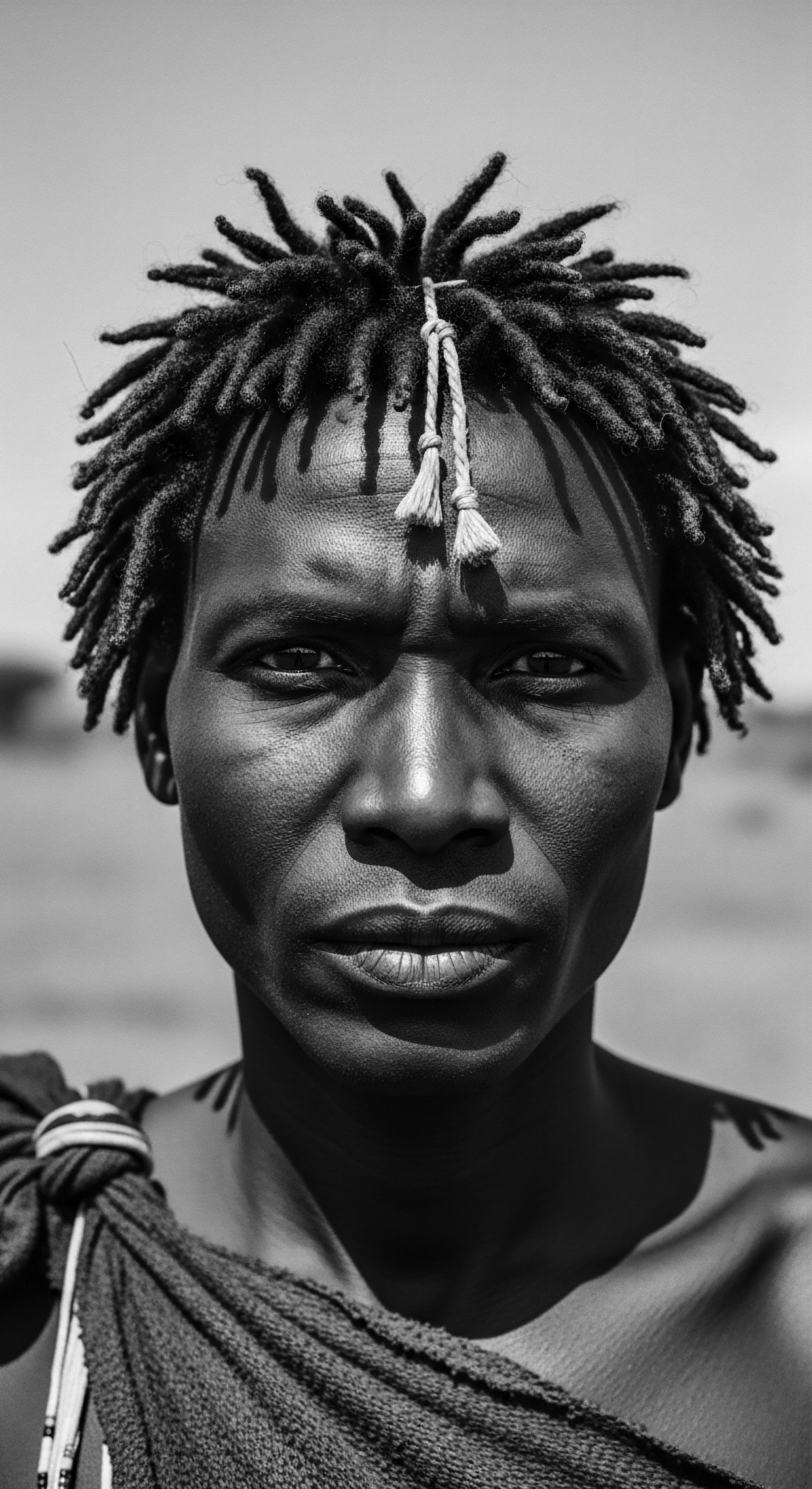
Fundamentals
The concept of ‘Historical Cleansing,’ within the sacred archives of Roothea’s living library, refers to the systematic, often violent, and culturally devastating eradication or suppression of traditional hair practices, aesthetics, and the profound meanings embedded within textured hair heritage. It is a deliberate effort to erase the ancestral memory and cultural significance held within the very strands of Black and mixed-race hair, replacing it with imposed, often Eurocentric, beauty standards. This cleansing is not merely about physical alteration; it signifies a deeper, more insidious process of disconnecting individuals and communities from their inherited wisdom, their stories, and their self-identity.
The meaning of Historical Cleansing extends beyond a simple act of hair cutting or styling. It is an act of cultural subjugation, aiming to diminish the rich history and communal bonds woven into hair traditions. The very essence of this cleansing lies in its attempt to dismantle the spiritual, social, and aesthetic connections that textured hair holds within diverse heritage communities. It is a historical wound, yet understanding its nature allows us to begin the process of reclamation and healing.
Historical Cleansing is the systematic suppression of textured hair heritage, severing individuals from ancestral practices and cultural identity.
To truly grasp the implications of Historical Cleansing, one must look to the past, recognizing how policies and societal pressures sought to control and redefine what was considered “acceptable” hair. This often meant the devaluation of natural textures and the promotion of straightened hair as a marker of civility or progress. The term signifies a historical period where hair, once a symbol of power and belonging, became a battleground for identity.
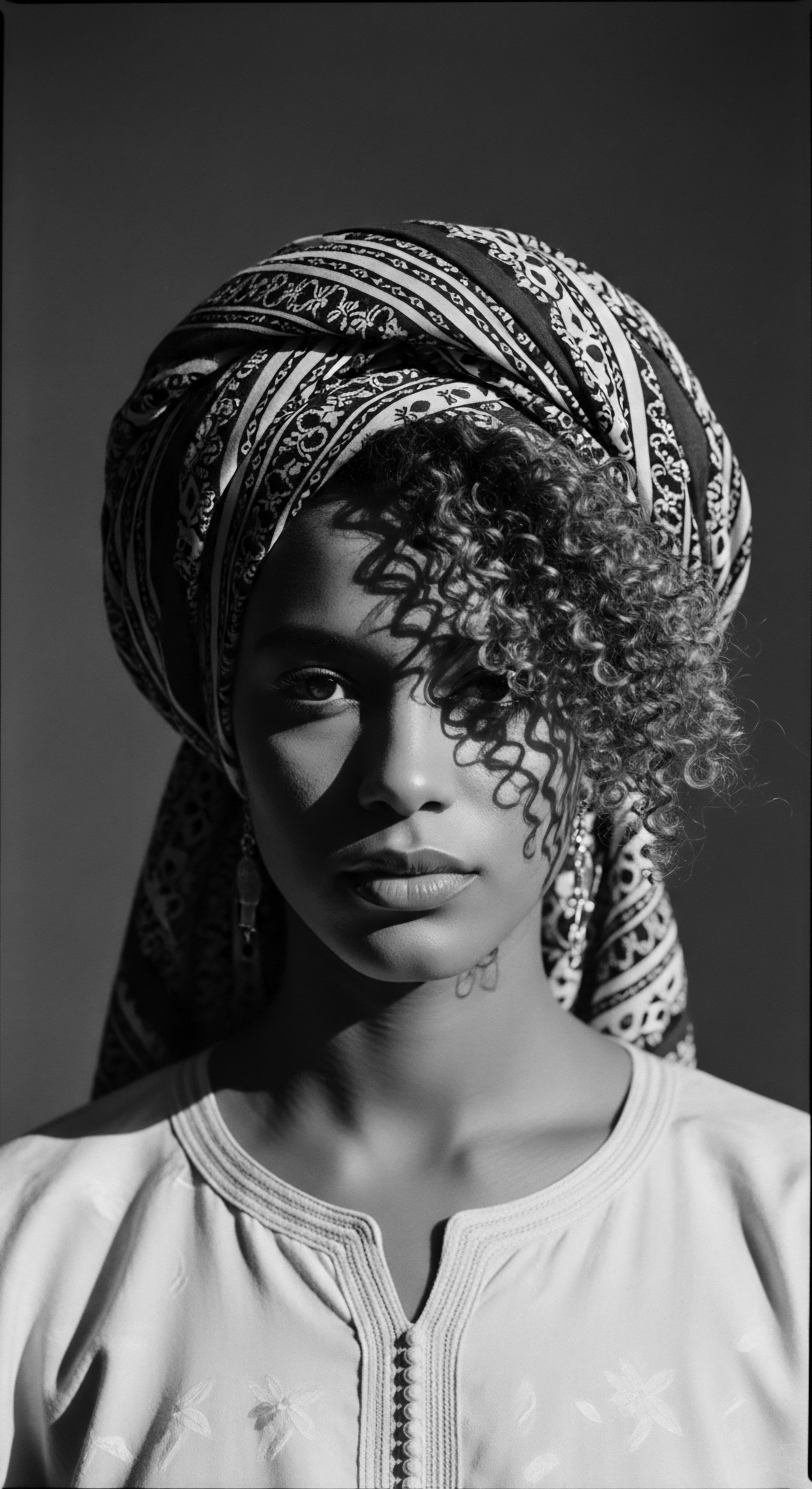
Early Manifestations of Cleansing
From the earliest moments of colonial encounters, the distinct and diverse hair traditions of African peoples and Indigenous communities became targets. European colonizers often viewed textured hair as “unruly” or “savage,” projecting their own cultural biases onto practices they did not comprehend. This was not a passive observation; it led to active measures designed to dismantle these traditions.
- Forced Alterations ❉ During the transatlantic slave trade, one of the first acts of dehumanization inflicted upon enslaved Africans was the shaving of their heads. This act was a calculated move to strip away personal and cultural identities, severing their ties to African culture and altering their relationship with their hair (Byrd & Tharps, 2001, p. 11).
- Imposed Standards ❉ As slavery entrenched itself, how enslaved women wore their hair became regulated, often requiring head coverings for field laborers, while those in domestic service might be compelled to mimic the styles of their enslavers, further suppressing the significance of African hairstyles.
- Symbolic Eradication ❉ The shaving of heads was a deeply symbolic gesture, aiming to erase the spiritual and social markers that hair represented in many African societies, where intricate styles conveyed age, marital status, social rank, and even ethnic identity.
The pervasive nature of this historical cleansing laid the groundwork for generations of internalized prejudice against textured hair, creating a legacy that continues to echo in contemporary society.
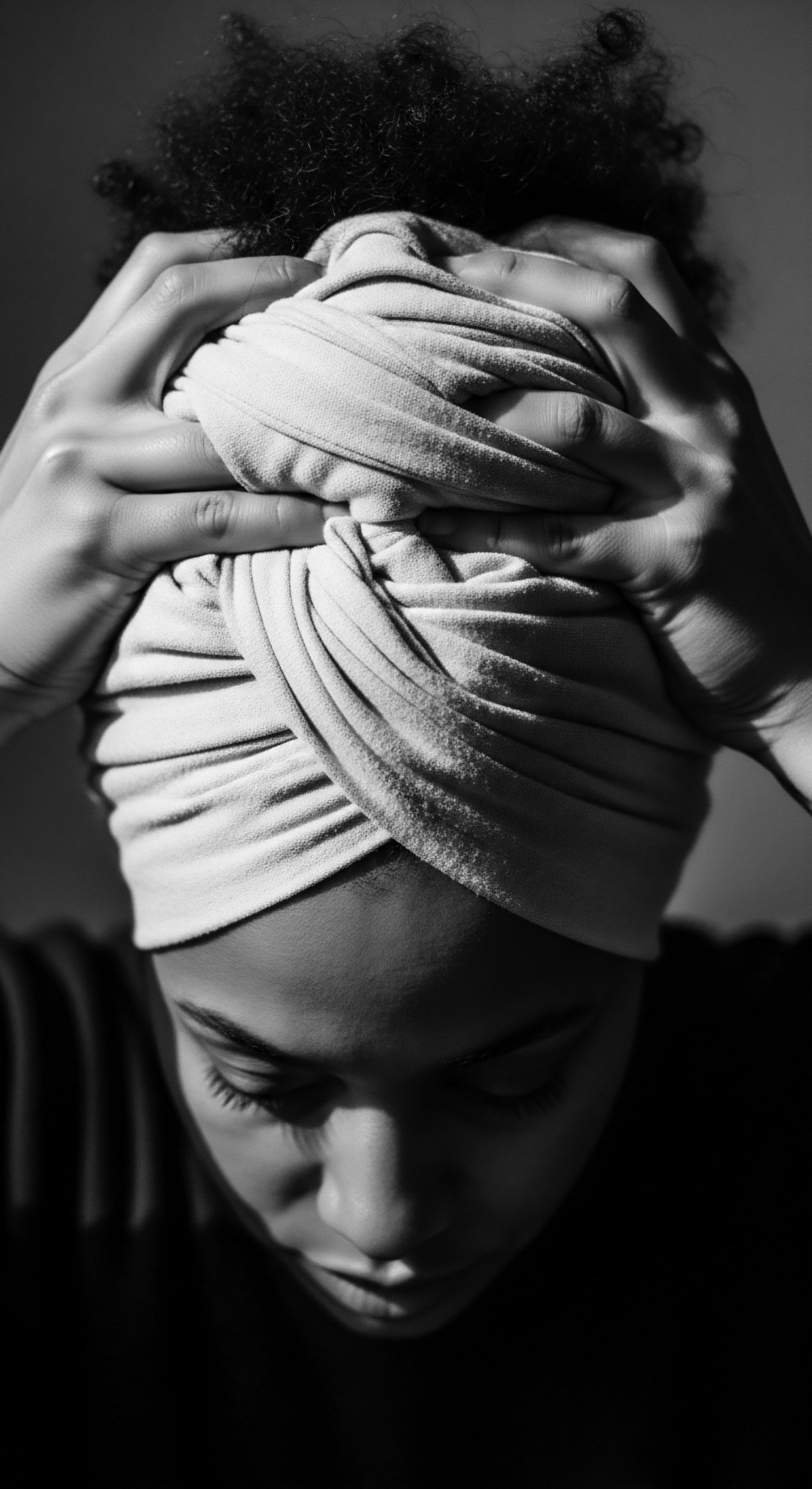
Intermediate
Moving beyond the initial understanding, the intermediate meaning of Historical Cleansing deepens to encompass the institutionalized mechanisms and societal pressures that perpetuated the suppression of textured hair heritage. This is not merely about isolated incidents but about widespread, systemic efforts to impose a singular aesthetic, rooted in Eurocentric ideals, upon Black and mixed-race communities. The explanation of Historical Cleansing at this level reveals its pervasive influence on communal self-perception and the intergenerational transmission of hair practices.
The significance of this cleansing lies in its long-term psychological and cultural ramifications. It fostered an environment where natural textured hair was often deemed unprofessional, unkempt, or undesirable, creating a hierarchy of beauty that marginalized indigenous and African hair traditions. This societal conditioning meant that many felt compelled to alter their hair to conform, impacting self-esteem and cultural connection.
Historical Cleansing, at its core, is the institutionalized erasure of hair as a cultural artifact, forcing conformity and devaluing diverse beauty.
The import of understanding this intermediate layer is to recognize how historical biases became embedded in social norms, influencing everything from educational policies to workplace expectations. It reveals a complex interplay of power, identity, and the enduring resilience of hair as a symbol of resistance.
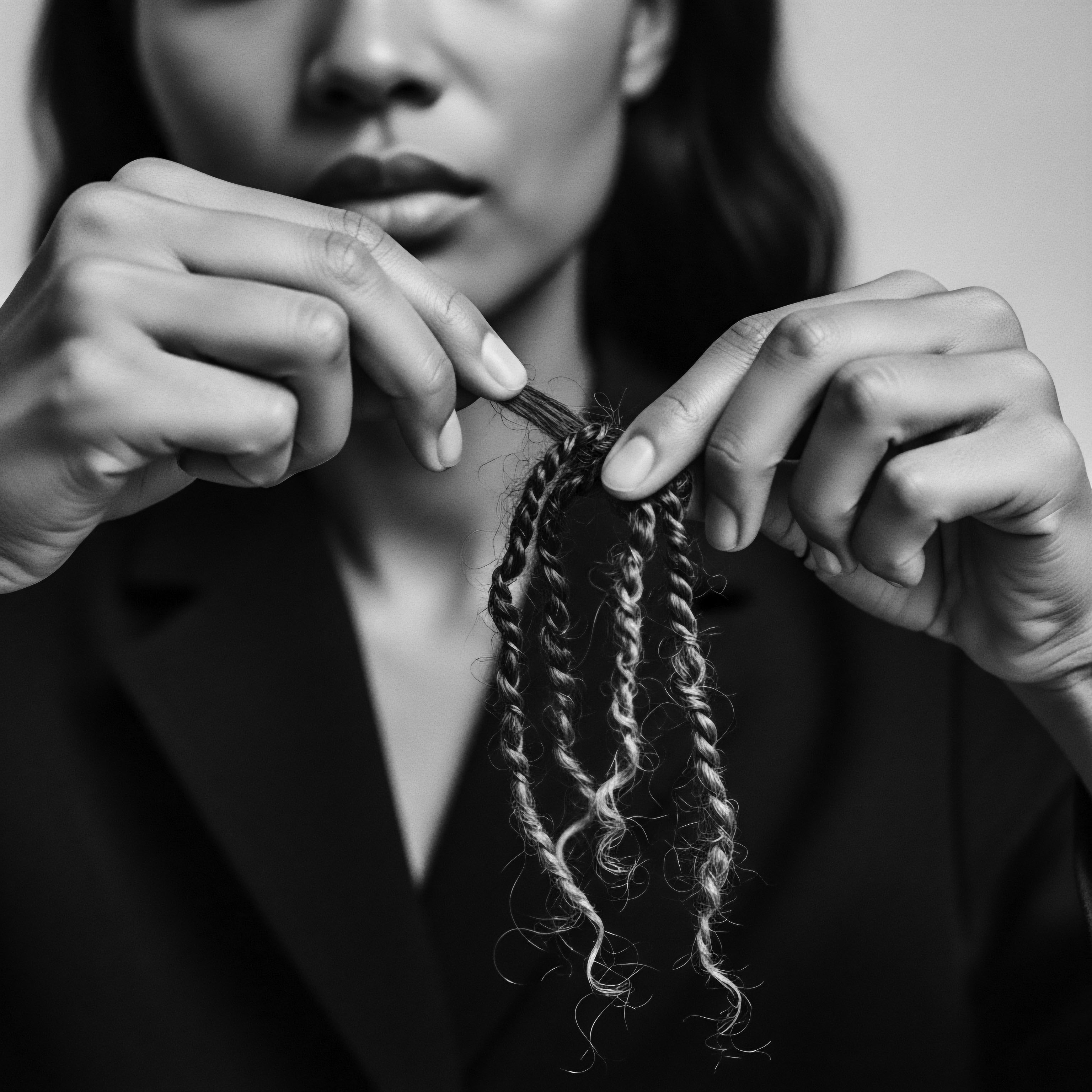
Systemic Tools of Assimilation
The mechanisms of Historical Cleansing were multifaceted, often employing both overt and subtle tactics to enforce assimilation. These tactics aimed to dismantle cultural identity, beginning with the very appearance of individuals.
- Boarding Schools and Hair Cutting ❉ A stark example of institutionalized Historical Cleansing is found in the history of residential and boarding schools in North America. For Indigenous children in Canada and the United States, forced hair cutting was a deliberate strategy to strip them of their cultural identity and assimilate them into Euro-American society. Children were often taken from their families, given new names, forbidden to speak their native languages, and had their hair forcibly shorn, even if there was no medical reason. This act was deeply traumatic, as long hair held profound cultural and spiritual significance in many Indigenous traditions, often symbolizing connection to ancestry, community, and the natural world. In some First Nations cultures, hair is cut only when mourning the death of a close family member, making the forced cutting a profound act of disrespect and psychological torment.
- The “Good Hair” Standard ❉ Across the African diaspora, the concept of “good hair” emerged as a direct consequence of Historical Cleansing. This term often referred to hair that was straighter, softer, and more closely resembled European hair textures, contrasting with “bad hair,” which was kinky, coily, or tightly textured. This distinction, born from colonial and enslavement-era biases, led to a booming industry of chemical relaxers and hot combs designed to alter natural hair textures to meet these imposed standards. A 2020 study by Duke University found that Black women with natural hairstyles were perceived as less professional, less competent, and less likely to be recommended for job interviews compared to candidates with straight hair, who were viewed as more polished and respectable. This statistic powerfully illuminates the lasting impact of Historical Cleansing, demonstrating how deeply ingrained these discriminatory beauty standards remain in contemporary society, affecting real-world opportunities and perpetuating systemic disadvantage.
- Hair Discrimination Policies ❉ Even in recent times, schools and workplaces have enforced grooming policies that penalize Black students and professionals for wearing natural hairstyles such as locs, braids, twists, or Afros. These policies often reflect Eurocentric beauty standards, deeming traditional Black hairstyles as “unprofessional” or “unruly”. Such discrimination not only undermines cultural identity but can also impede academic and social-emotional development.
| Traditional Practice (Heritage) Intricate braiding patterns signifying status, age, or tribal identity. |
| Imposed Standard (Historical Cleansing) Forced shaving or cutting of hair, stripping cultural markers. |
| Traditional Practice (Heritage) Use of natural oils, butters, and herbs for nourishment and styling. |
| Imposed Standard (Historical Cleansing) Pressure to chemically straighten or alter natural texture to conform. |
| Traditional Practice (Heritage) Communal hair care rituals as bonding experiences. |
| Imposed Standard (Historical Cleansing) Isolation and shame associated with natural hair. |
| Traditional Practice (Heritage) Hair as a spiritual conduit and connection to ancestors. |
| Imposed Standard (Historical Cleansing) Hair as a symbol of "otherness" or "unruliness." |
| Traditional Practice (Heritage) The contrast reveals the deliberate assault on Black and mixed-race hair heritage, transforming symbols of identity into markers of perceived inferiority. |
The ramifications of these historical actions are not confined to the past. They manifest as internalized racism, where individuals may devalue their own natural hair, and as ongoing societal biases that continue to impact opportunities and well-being. The exploration of these systemic tools of assimilation is crucial for understanding the enduring legacy of Historical Cleansing.
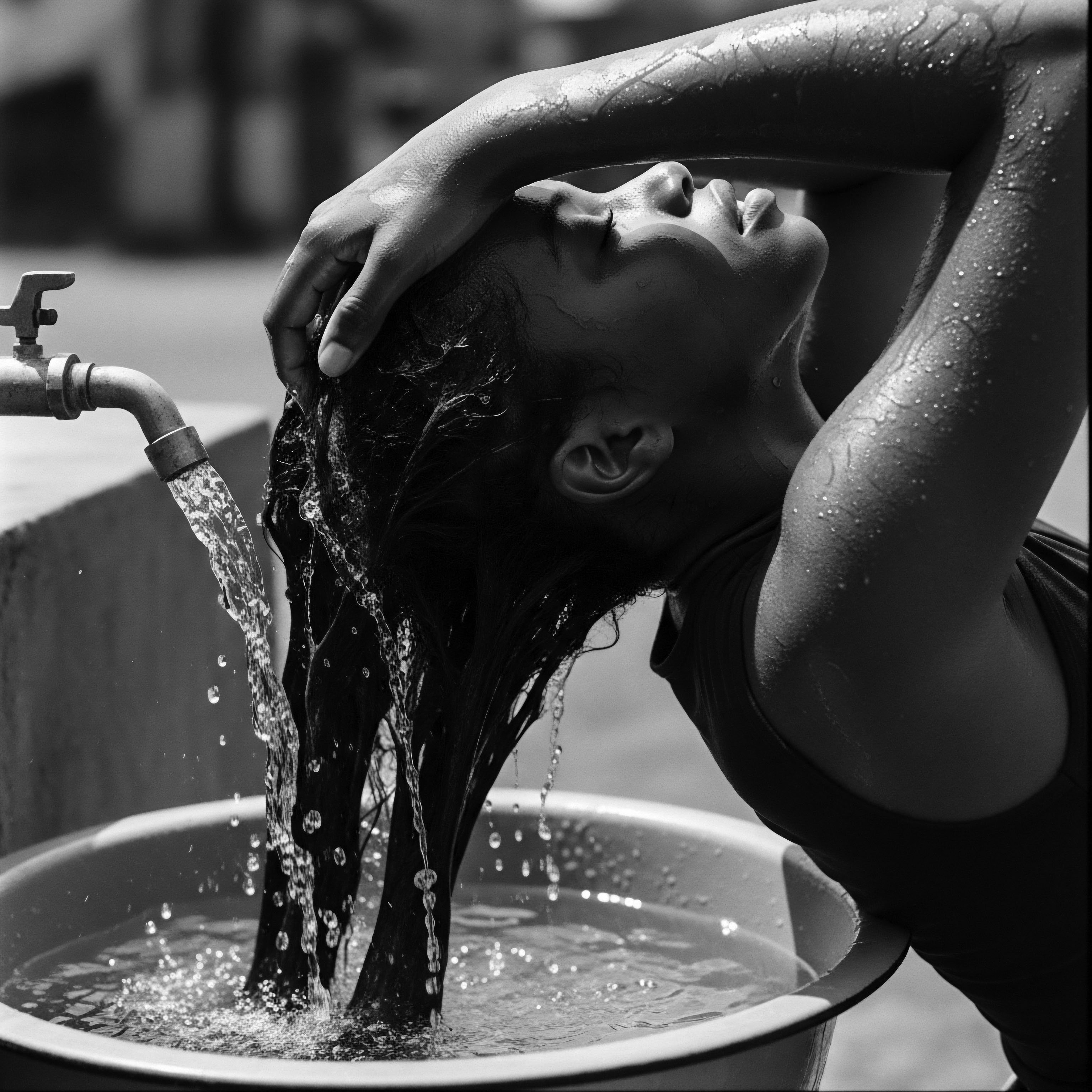
Academic
From an academic vantage, ‘Historical Cleansing’ within Roothea’s framework represents a complex socio-historical phenomenon, a deliberate and often brutal campaign of cultural subjugation manifest through the systematic denigration and eradication of indigenous and diasporic hair traditions. This conceptualization moves beyond simple discrimination, identifying it as a form of cultural genocide where hair, as a primary marker of identity, community, and spiritual connection, becomes a central target. The definition encompasses the intentional imposition of alien aesthetic norms and care practices, thereby disrupting the intergenerational transmission of ancestral knowledge and fostering internalized oppression.
The meaning of Historical Cleansing, when scrutinized through academic lenses, extends to the profound psychological and sociological impacts that reverberate through generations. It is an act of epistemic violence, dismantling indigenous epistemologies surrounding hair, replacing them with a hegemonic worldview that devalues natural textured hair as deviant or inferior. This explication requires a rigorous examination of power dynamics, colonial legacies, and the resilience of cultural memory.
Historical Cleansing, academically defined, is a culturally genocidal act, severing the deep-seated identity and ancestral knowledge embodied in textured hair.
The profound import of this term lies in its capacity to delineate a specific form of cultural aggression that has left indelible marks on Black and mixed-race communities globally. It demands an interdisciplinary analysis, drawing from anthropology, ethnobotany, psychology, and critical race theory, to fully grasp its scope and lasting consequences.
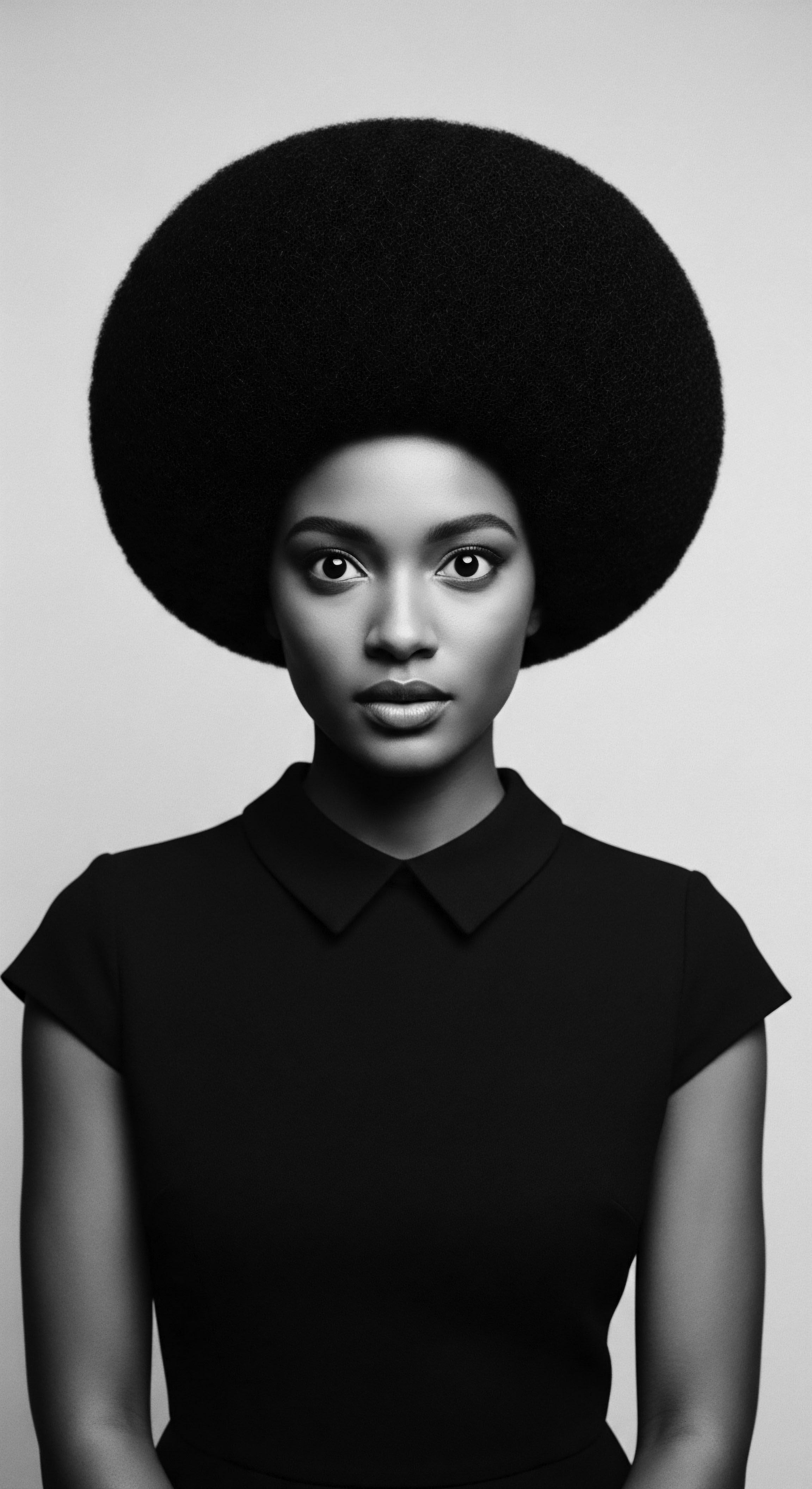
Interconnected Incidences and Outcomes
The academic examination of Historical Cleansing reveals a pattern of interconnected incidences, each contributing to the erosion of textured hair heritage. One compelling area for deep analysis lies in the intersection of forced assimilation policies and their direct impact on traditional hair care practices, particularly within the context of Indigenous communities.

Case Study ❉ The North American Residential School System
The residential school system in Canada and the Indian boarding schools in the United States serve as a harrowing case study of Historical Cleansing, where the forced cutting of Indigenous children’s hair was a deliberate and systematic act of cultural obliteration. These institutions, operating for over a century (e.g. 1819-1969 in the U.S. and until 1996 in Canada), were designed to “kill the Indian, save the Man,” aiming to forcibly assimilate Indigenous children into Euro-Canadian and Euro-American ways of living.
Upon arrival at these schools, children were stripped of their traditional clothing, forbidden to speak their native languages, given new English names, and crucially, had their hair forcibly cut or shaved. This act was not merely about hygiene; it was a profound violation of spiritual and cultural beliefs. For many Indigenous peoples, long hair held deep spiritual meaning, symbolizing connection to ancestry, knowledge, and identity. In some First Nations traditions, hair is cut only in times of deep mourning, making the forced cutting by school authorities a psychological torment that implied the death of their family or culture.
Martha Bruce, a survivor of St. Michael’s Residential School in Alert Bay, British Columbia, vividly recalls, “The new ones, every time they came in, they cut their hair”. This systematic assault on their hair was a direct attack on their identity and masculinity, particularly for Indigenous boys whose long, braided hair was a significant cultural marker.
The long-term consequences of this specific form of Historical Cleansing are profound and continue to manifest as intergenerational trauma within Indigenous communities. The forced removal of children from their families and the suppression of their cultural practices, including hair traditions, disrupted the transmission of ancestral knowledge and contributed to a loss of cultural identity. This trauma can lead to various issues, including challenges with parenting skills, domestic abuse cycles, and high rates of youth suicide in affected communities. The impact on mental health, including changes in self-esteem and self-identity, is a well-documented outcome of such discriminatory practices.
The “Federal Indian Boarding School Initiative Investigative Report” in the U.S. and the findings of Canada’s Truth and Reconciliation Commission have formally documented these atrocities, confirming the systematic militarized and identity-alteration methodologies employed, with hair cutting explicitly listed as a tool for assimilation. The enduring strength of Survivors and Indigenous cultures, despite these attempts at eradication, stands as a testament to their resilience.
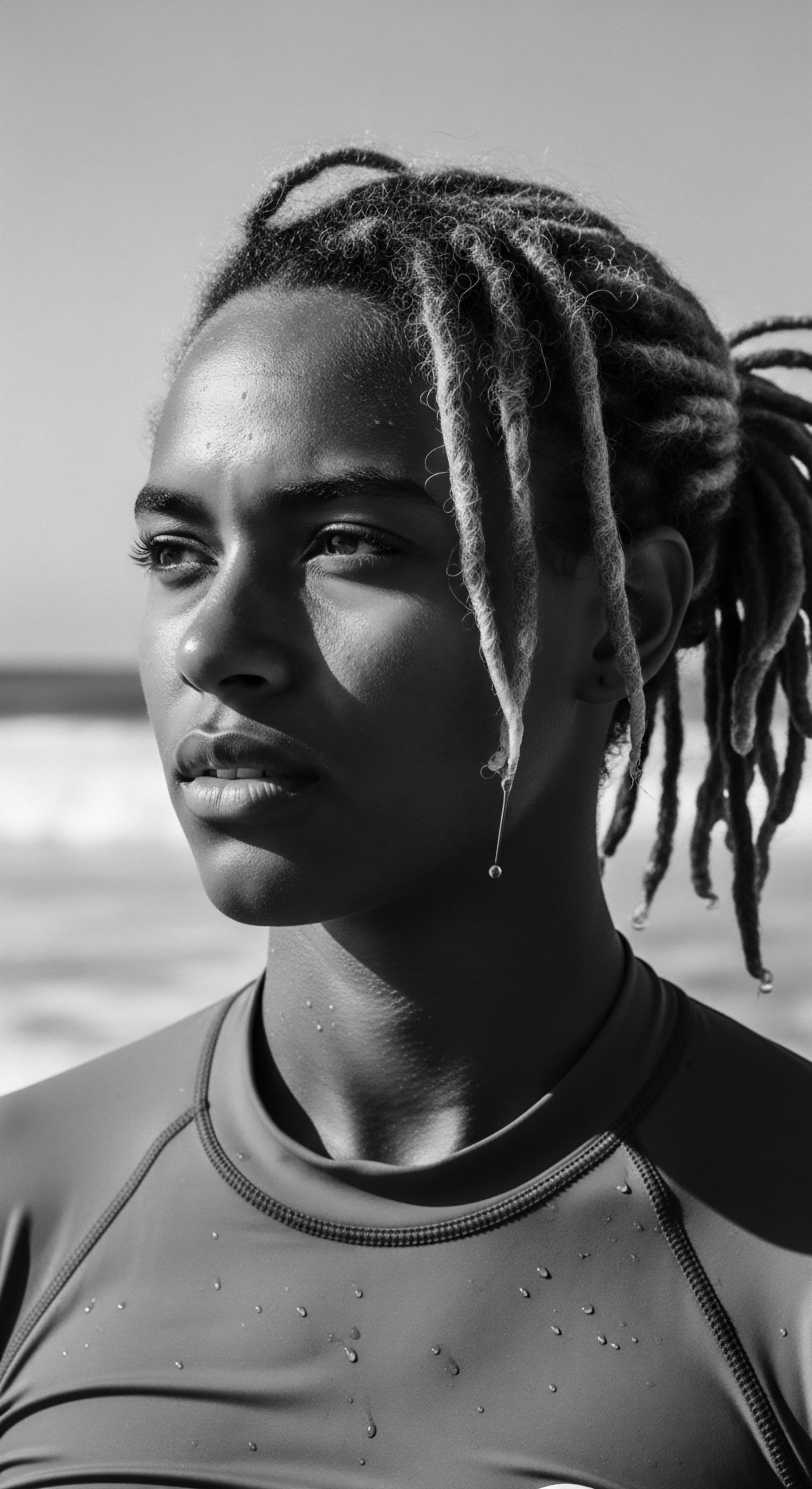
Ethnobotanical Dispossession and Reclamation
Another critical dimension of Historical Cleansing involves the suppression and subsequent loss of ethnobotanical knowledge related to textured hair care. Across Africa and its diaspora, intricate systems of natural hair care, utilizing a vast array of indigenous plants, were developed over millennia. These practices were not merely cosmetic; they were deeply integrated into holistic wellness, communal rituals, and cultural identity.
- Loss of Traditional Knowledge ❉ The colonial project, alongside the transatlantic slave trade, actively disrupted these practices. Enslaved Africans were separated from their ancestral lands and the botanical resources that sustained their hair traditions. The oral transmission of this knowledge, a cornerstone of many African societies, was severely hampered, leading to a decline in its preservation among younger generations. Ethnobotanical studies highlight this urgent need to document and promote the use of plant resources and their associated knowledge before they are permanently lost.
- Topical Nutrition and Ancestral Wisdom ❉ Modern scientific inquiry is now beginning to validate the efficacy of many traditional plant-based hair remedies. Research in ethnobotany, though still scarce for hair care in Africa, is revealing the potential of various plant species for addressing scalp conditions, promoting hair growth, and providing topical nutrition. For instance, studies are exploring the connection between plants traditionally used for hair conditions and their potential antidiabetic properties, suggesting a deeper, systemic understanding of wellness within ancestral practices that modern science is only beginning to unravel. The leaves of plants like Ziziphus Spina-Christi and Sesamum Orientale, traditionally used as shampoos and conditioners in regions like Ethiopia, underscore the sophisticated understanding of natural ingredients for hair health within these communities.
- Reclamation as Resistance ❉ The resurgence of the natural hair movement across the Black diaspora is a powerful act of reclamation against Historical Cleansing. It represents a conscious return to ancestral practices, a celebration of natural textures, and a rejection of imposed beauty standards. This movement is not just about aesthetics; it is about healing intergenerational trauma, reconnecting with heritage, and asserting cultural autonomy. It involves the rediscovery and re-valorization of traditional ingredients and techniques, fostering a renewed sense of pride and belonging.
The ongoing struggle against hair discrimination, even in contemporary settings like schools and workplaces, underscores the persistent legacy of Historical Cleansing. Yet, the growing awareness and legislative efforts, such as the CROWN Act in the United States, signify a collective movement towards dismantling these historical biases and ensuring the freedom to express one’s textured hair heritage without prejudice. The continued fight for acceptance and celebration of Black and mixed-race hair is a direct response to centuries of systematic attempts to erase it, a testament to the enduring power of cultural identity.
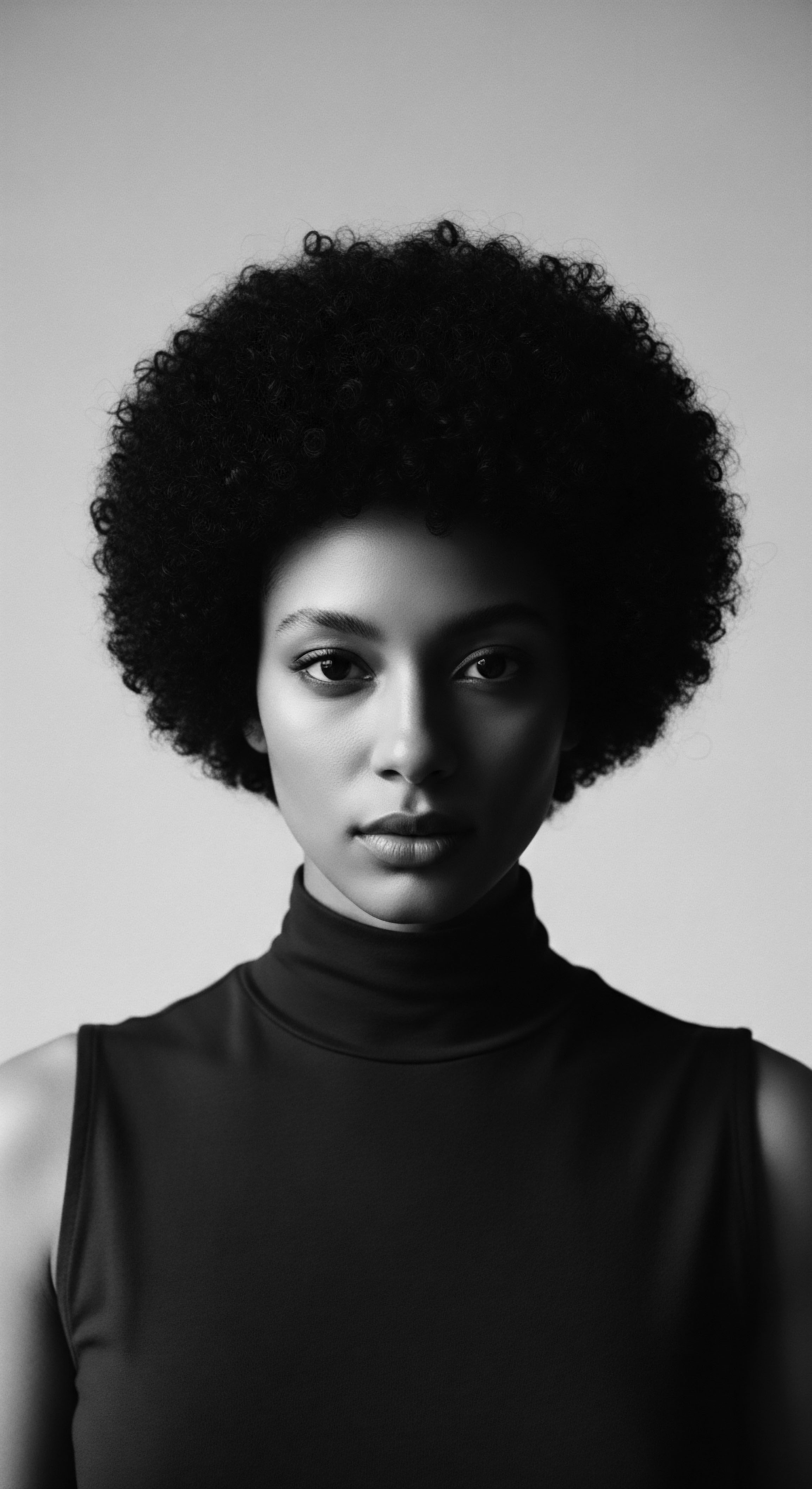
Reflection on the Heritage of Historical Cleansing
As we close this exploration of Historical Cleansing, a profound truth emerges ❉ the story of textured hair is one of enduring spirit. It is a chronicle etched not only in scientific understanding of coils and kinks but also in the very soul of a strand, carrying the whispers of ancestral wisdom and the echoes of resilience. The journey from the systematic attempts to erase hair heritage to the vibrant reclamation movements of today speaks volumes about the unyielding power of identity.
This journey reminds us that hair, for Black and mixed-race communities, has always been more than mere adornment. It is a living archive, a repository of stories, rituals, and profound cultural meaning. The historical cleansing, in its various manifestations, sought to sever this vital connection, to dim the radiance of diverse textures, and to silence the narratives woven into each curl and braid. Yet, through generations of quiet defiance and persistent cultural transmission, the tender thread of heritage has held fast.
The contemporary movement celebrating natural textured hair is not simply a trend; it is a profound act of healing, a collective breath taken after centuries of holding back. It is the unbound helix, spiraling back to its authentic form, drawing strength from the roots of tradition and reaching towards a future where every strand is honored as a sacred part of self. This ongoing work of re-membering and re-claiming is a testament to the enduring beauty and power of ancestral wisdom, a continuous affirmation that the heritage of textured hair will forever shine brightly.

References
- Byrd, A. & Tharps, L. (2001). Hair Story ❉ Untangling the Roots of Black Hair in America. St. Martin’s Press.
- Fontaine, L. S. (2002). Canadian Residential Schools ❉ The Legacy of Cultural Harm. Indigenous Law Bulletin, 5(17), 4.
- Kempf, K. M. et al. (2024). Confronting Hair Discrimination in Schools – A Call to Honor Black History by Protecting Student Rights. IDRA Newsletter.
- Opie, T. & Phillips, K. (2015). Altered Beauty ❉ African-Caribbean Women Decolonizing Racialized Aesthetics in Toronto, Canada. Revue YOUR Review.
- Rosette, A. S. & Dumas, T. L. (2007). The Hair Dilemma ❉ African American Women’s Hair and Its Impact on Perceptions of Professionalism. Management Communication Quarterly, 21(1), 5-34.
- Starlight, L. & Starlight, C. (2022). Strands of Identity and Resilience ❉ Unraveling the Experiences of Indigenous Masculinity in Canada Under British Dominion Through the Lens of Hair. Dalhousie University.
- United States Department of the Interior. (2022). Federal Indian Boarding School Initiative Investigative Report, Volume 1 .
- Ziziphus spina-christi (L.) Willd. (2025). Plants used for hair and skin health care by local communities of Afar, Northeastern Ethiopia. Ethnobotany Research and Applications.
